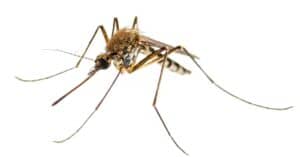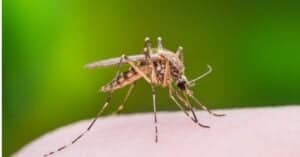A “baby” mosquito isn’t just a smaller version of an adult mosquito. There are several distinct stages that baby mosquitoes go through before they emerge as the pesky adult mosquitoes that feast on your blood. Interestingly, not all mosquitoes are bloodthirsty (but we’ll share more about that later). For now, learn five little-known baby mosquito facts and then learn how to get rid of them!
Baby Mosquito Facts
1. Mosquito Egg Rafts – They’re Built to Ensure Survival
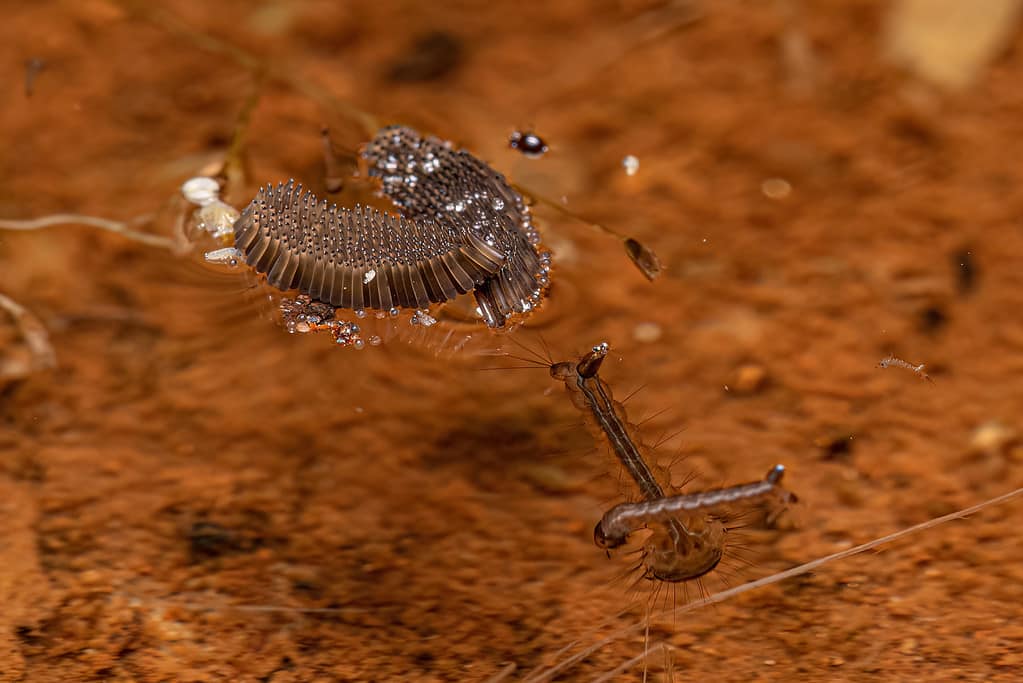
Female mosquitoes can lay several hundred eggs at a time. A gelatinous substance keeps them together as they float on standing water, improving their chances of survival.
©ViniSouza128/ via Getty Images
A mosquito’s lifecycle starts in an egg. However, because mosquitoes lay their eggs on the surface of standing water (like ponds or places as small as bird baths), they don’t just lay a single one. To make sure that their eggs have a chance at survival, they lay them together (sometimes hundreds at a time!). They are all fused together with a gelatinous substance that allows them to remain buoyant in the water.
A female mosquito does not stick around after laying her eggs, which means those baby mosquitoes are on their own. This ability to maintain cohesion with one another during the initial development stage is an adaptation of the mosquito to ensure its offspring’s survival. Not only that but the embryo inside the egg can survive for extended periods before just the right conditions arrive for it to continue development! This is a process called diapause and highlights the survivability of these flying insects.
2. Mosquito Larvae – They Filter-Feed During This Stage
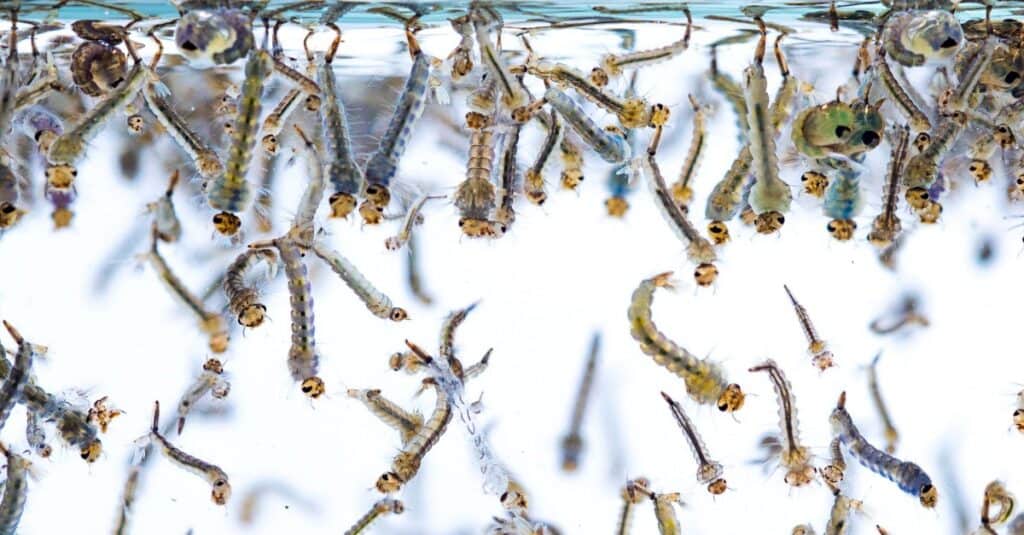
Mosquito larvae rely on microorganisms in their aquatic environments to feed on, which allows them to continue their development.
©iStock.com/kitthanes
When baby mosquitoes are at the larvae stage, they eat microscopic organisms that they find in the water where they are continuing to develop. They also snack on algae. They have an interesting way of feeding, which is often referred to as filter feeding. At this stage, they are equipped with specialized mouthparts.
They have tiny brushes around their mouths that help them filter out their food sources. During this stage, their hunger is insatiable. They need tons of energy to continue with their development. There are some larger larvae species that eat other mosquito larvae; however, they typically snack on microorganisms like bacteria along with fungi and plankton.
3. Mosquito Pupae – They’re Expert Tumblers
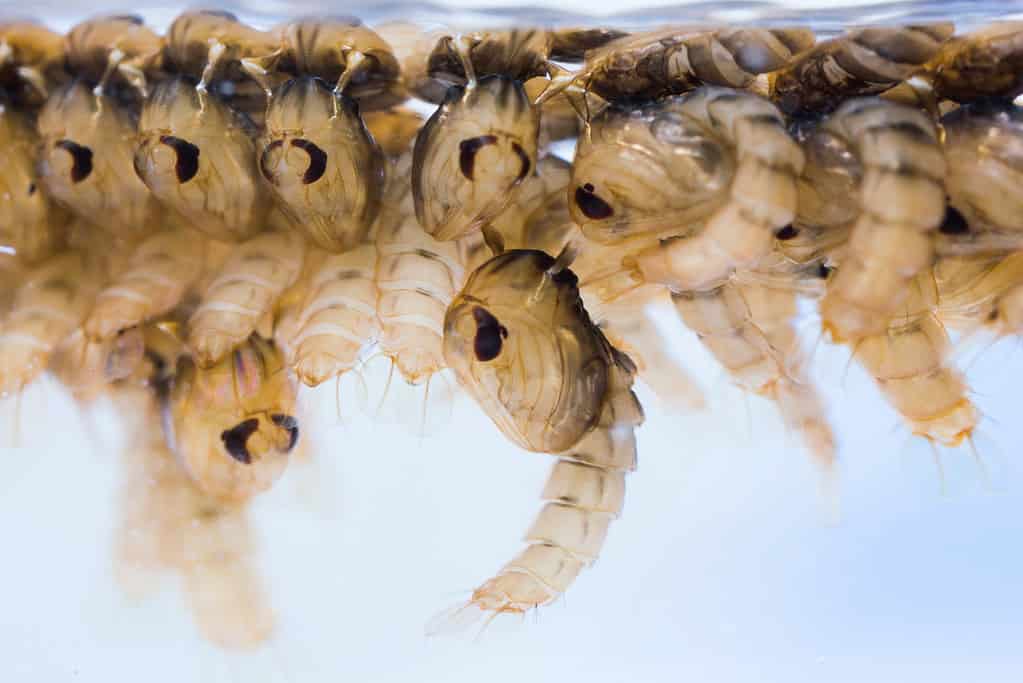
Mosquito pupae are experts at underwater somersaults.
©smuay/ via Getty Images
During the pupa stage, baby mosquitoes are focused on reaching adulthood. This is a state of transition for them and although the larvae stage involves lots of feeding, during the pupa stage, they don’t eat. Instead, their energy and focus are on survival. At the larvae stage, they can swim and when they move to the pupa stage, they’re actively avoiding predators.
This means they can move a lot more rapidly when they’re in the water. They’re often called “tumblers” because of the way they seem to perform aquatic acrobatics. These movements keep them safe, but they also allow them to reach the surface of the water for oxygen. They’re still wrapped in an exoskeleton, but the time is approaching when they will completely transform and emerge as adult mosquitoes.
4. Emerging Mosquitoes – It’s Called Eclosion
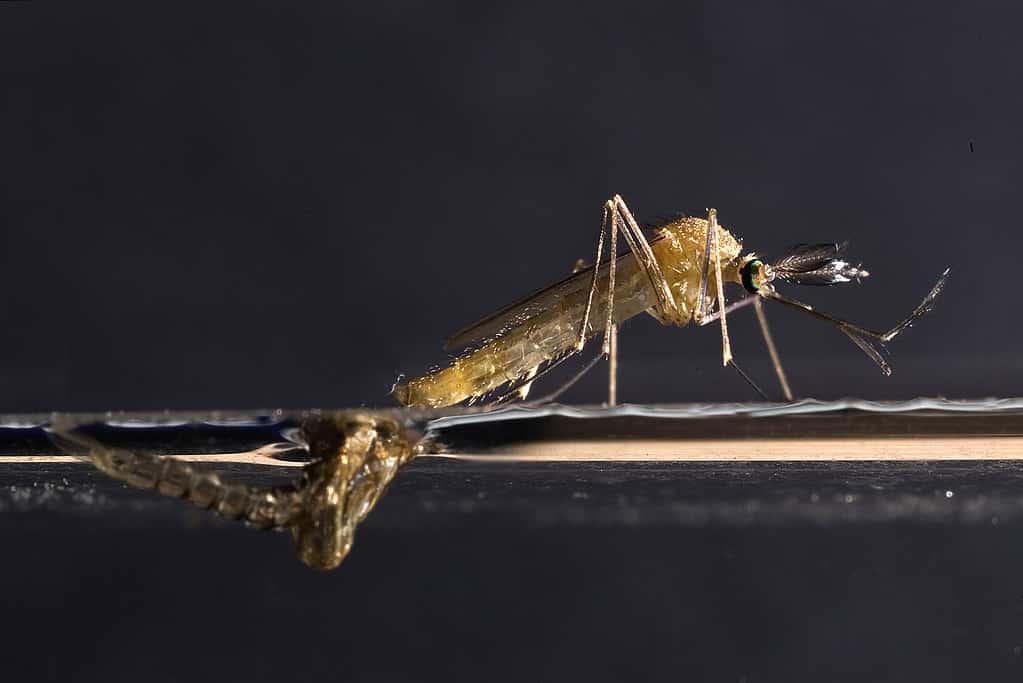
Common house mosquito hatching, emerging as an adult mosquito.
©Michel VIARD/ via Getty Images
At the eclosion stage, the baby mosquito’s transformation is complete. It can finally emerge into the world as an adult mosquito. This is when the exoskeleton splits to allow the mosquito to exit. However, this process is a little bit more complex than you might think.
The mosquito has to contract in such a way that it is able to split the exoskeleton, but it also uses the power of air pressure to help it. When it eventually splits the exoskeleton, it starts going out with its head first. This process takes several minutes as they emerge completely. Then, they prepare for flight!
5. Adult Mosquitoes – Only the Females Are Thirsty for Blood
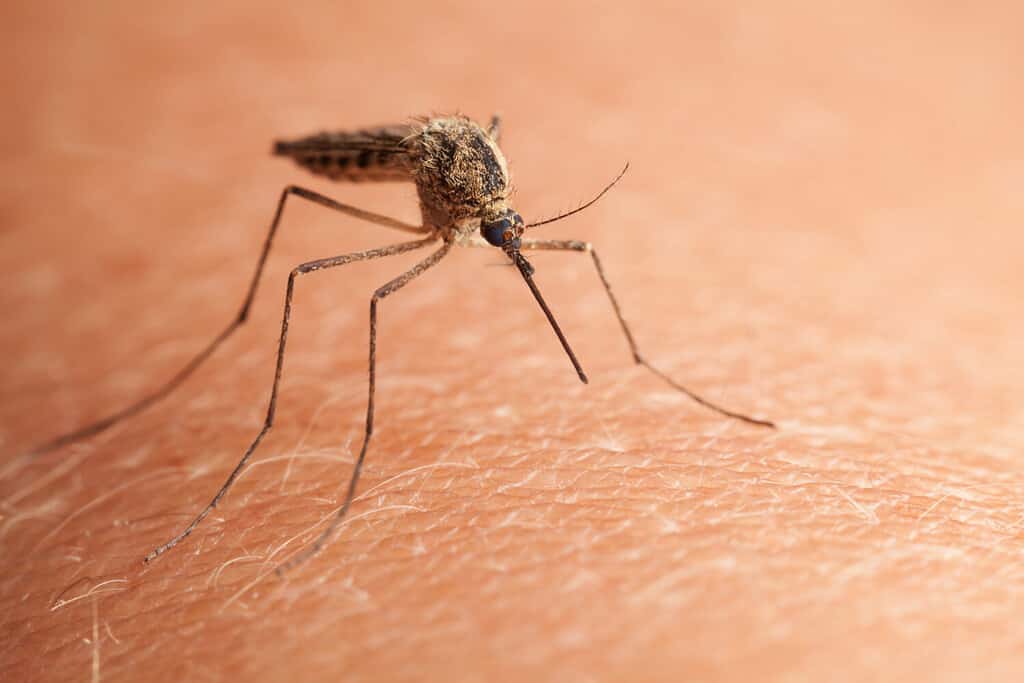
There are thousands of mosquito species that inhabit different parts of the world!
©Anest/Shutterstock.com
Male mosquitoes are quite satisfied with their diet of nectar. They’re sugar fiends and it’s their female counterparts that seem to find you during the summer months when you’re just trying to enjoy the outdoors. They’re the suckers that manage to feed on your blood.
However, the female mosquito isn’t bloodthirsty for no reason. She needs blood in order to reproduce. The iron and proteins she feeds on allow her to create those eggs that form raft-like structures. This is a requisite in order for the next generation of mosquitoes to emerge.
The Mosquito Life Cycle
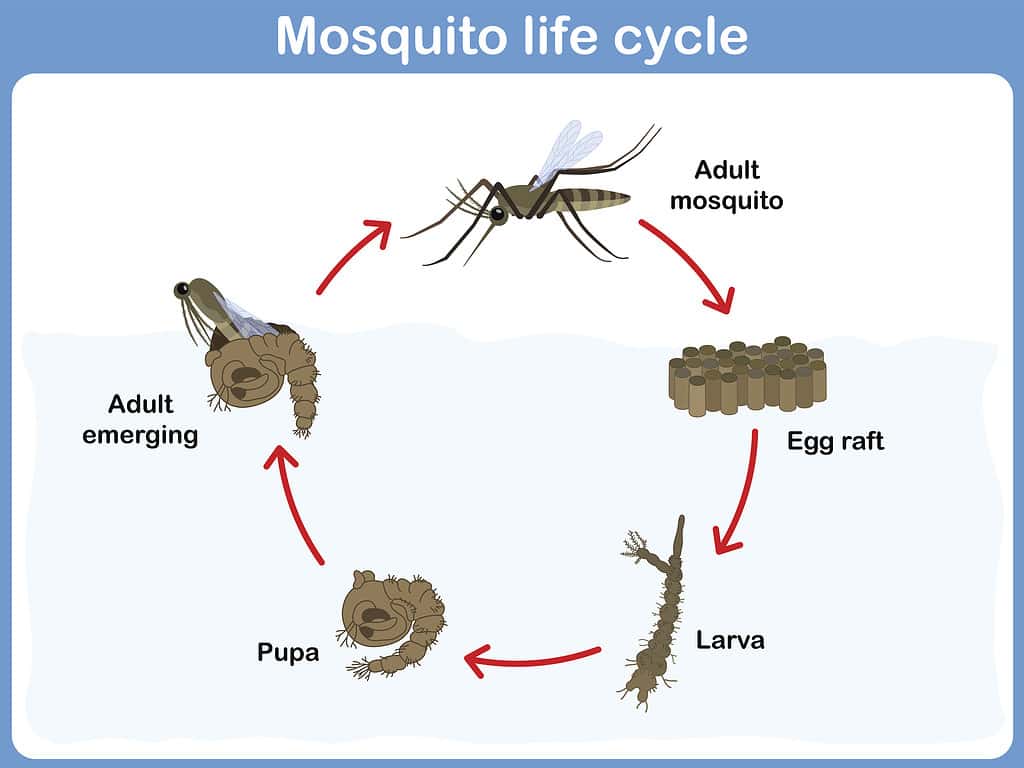
The mosquito life cycle encompasses five distinct stages.
©aekikuis/ via Getty Images
Assuming the conditions are right for the embryos in the eggs, it can take anywhere from one to three days for this stage to be complete. After that, the larvae stage requires anywhere between five and 14 days. This is when baby mosquitoes are wiggling around in the water, looking a lot like worms. This is also when they’re hungriest! They need to feed to produce enough energy for their continued development. Then, the pupa stage lasts anywhere between one to four days.
This pupa stage is similar to the metamorphosis stage of butterflies — when they cocoon. They stop feeding and just keep developing. Finally, they’re able to undergo eclosion, which is when they get to release themselves from their exoskeleton. Once they’re out, they prepare to fly and start feeding. Their lifespan can last anywhere between several weeks to several months, but that’s highly dependent on the conditions of their environment and the availability of food sources.
How to Get Rid of Baby Mosquitoes
Standing Water is the Culprit
Considering the mosquito lifecycle starts in standing water, you can assess your property for any areas that collect water. In fact, this is Disneyland‘s secret for keeping mosquitoes away. They’ve developed structures in such a way that prevents any water from pooling. So long as you eliminate standing water, mosquitoes don’t have a place to lay their eggs. Their eggs don’t have a chance to develop into the different stages to eventually emerge as adult mosquitoes. Whether it’s a bird bath or an area on your property that seems to collect water, you can address this issue and nip the mosquito issue in the bud.
Don’t Forget Your Gutters
When you’re surveying your property to get rid of any standing water, it’s easy to notice areas at your eye level. However, there could be standing water in your gutters, particularly if they’re clogged. Whether you need to clean them out or install gutter guards to prevent them from clogging is up to you. Just don’t forget that there are areas outside of your eyeline that may be the perfect environment for mosquitoes to start developing.
Try Citronella Candles or Other Repellants
If you frequently encounter mosquitoes, whether it’s at your property or other locations you frequent outdoors, you should be using repellents. Sometimes it could be a spray or some kind of topical but another way to protect yourself is to wear long sleeves and long pants. If you are going to be hanging out right outside your home and you want to keep these pesky mosquitoes away, you might try a citronella candle. That’s an offensive scent to mosquitoes so it’ll keep them from venturing in your area. There are repellents you can purchase but there are also some that you can make at home by mixing water and essential oils in a spray bottle.
The photo featured at the top of this post is © Kwangmoozaa/Shutterstock.com
Thank you for reading! Have some feedback for us? Contact the AZ Animals editorial team.




